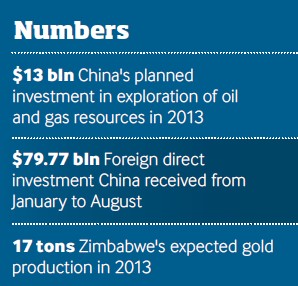
Growth Forecast
The World Bank cut its growth forecast for developing economies in East Asia and the Pacific region as a whole in 2013 to 7.1 percent from the previous forecast of 7.8 percent, according to a report the bank released in October. ìGrowth inChinais expected to meet the official indicative target of 7.5 percent this year. The short-term outlook is improving as industrial production data suggests further strengthening of output in the third quarter,î said the report.Chinais likely to see further rebalancing of its economy by slowing credit growth and investment, although the pacing is likely to depend on overall growth, it said.
Registration Starts
A total of 577 people applied to register companies at the newly launchedShanghaipilot free trade zone (FTZ) on October 8, the first day for registration. Meanwhile, 1,480 people visited the zoneís service lobby asking for advice and information that day. Sun Baohua, a businessman fromWenzhouin neighboring Zhejiang Province, was the first person to apply for a registration. The Chinese Government officially inaugurated the 29-square-km Shanghai FTZ on September 29. Testing of a convertible yuan and a wider opening of 18 service sectors are expected in the zone, which could usher in wider economic reforms across the country.
Service Purchasing
The Chinese Government has issued guidelines for government purchase of public services from social organizations and private companies recently. The State Council, Chinaís cabinet, announced in a statement that the country is to gradually purchase services at a local level between now and 2015, and it will establish a system by 2020 for the purchasing of private sector services by government organizations. Public service sectors including education, employment, social security, medical health, housing security, culture and sports, as well as services for the disabled, will be opened up to more private sector investment, according to the statement.
Production Cuts List
Chinaunveiled a list of 58 companies that should cut their excess production capacity by the end of the year as a part of the countryís economic restructuring drive recently. The enterprises are from 13 industries with overcapacity, mostly energy-consuming and highly-polluting, including steel, coke, cement, printing and dyeing sectors, according to the Ministry of Industry and Information Technology. Local authorities must ensure that overcapacity of the companies is thoroughly eliminated, rather than transferred to other regions. This is the third batch of enterprises that are required to cut overcapacity by the end of 2013.